In the 1990s, due to the backwardness of grain storage technology and equipment, deterioration, condensation, heat generation, insect damage, and mildew of grain reserves often occurred in China, and grain loss was alarming.
Today, with the development of big data, cloud computing, the Internet of Things, artificial intelligence, and 5G, China’s grain storage has upgraded, and its ability to ensure food security has become very strong.

In recent years, the “4-in-1” (grain monitor & control, aeration & ventilation, grain cooling, and circulation fumigation) grain storage technology has spread throughout the Chinese market, bringing China’s grain storage to a higher level.
Grain Monitor & Control
Modern electronic technology is now involved in the grain storage process, helping with the real-time monitoring, analysis, prediction, and control of grain conditions (moisture, insect damage, phosphine gas concentration).
The grain monitor & control system consists of monitor & control hosts and extensions.

After the monitor & control extensions collect the grain condition data, it transmits the data to the control center through wire or wireless signals, and the grain condition appears on the monitoring software interface in real time.
The software can automatically start or stop related equipment for cooling & dehumidification.
There are temperature & humidity sensors in the silo, which can detect the temperature & humidity at any time.
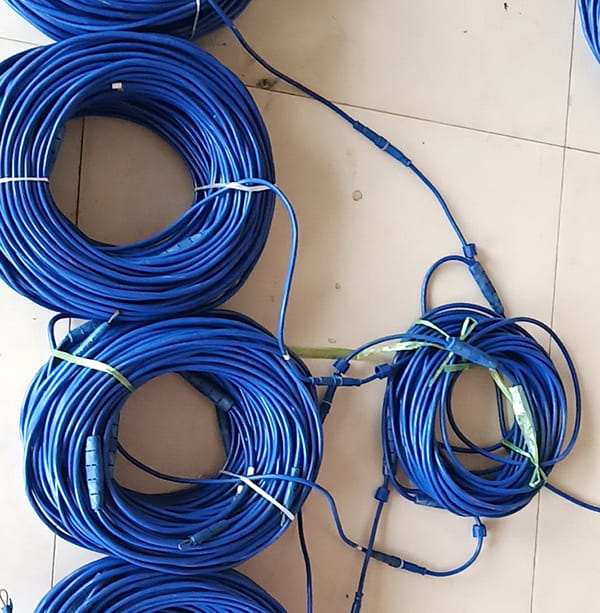
Aeration & Ventilation
After loading the grain into the silo, it is necessary to ventilate timely according to the needs and climatic conditions.
Aeration & ventilation balance the temperature and moisture of the grain, prevent heat and mildew, and ensures grain safety in the bin.
Intelligent aeration & ventilation has the ability to control the humidity and temperature inside the steel silo, mainly involves the following aspects:
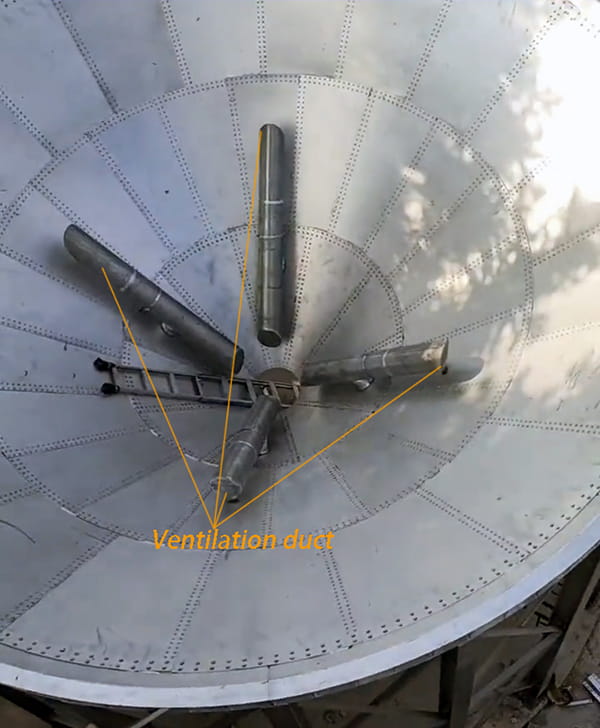
- Special Ductwork Design
- Ventilation Timing
- Temperature & Humidity Difference
- Air Volume & Exchange Frequency Adjustment
As ductwork design also takes into account both fumigation & grain cooling, thus preventing food damage.
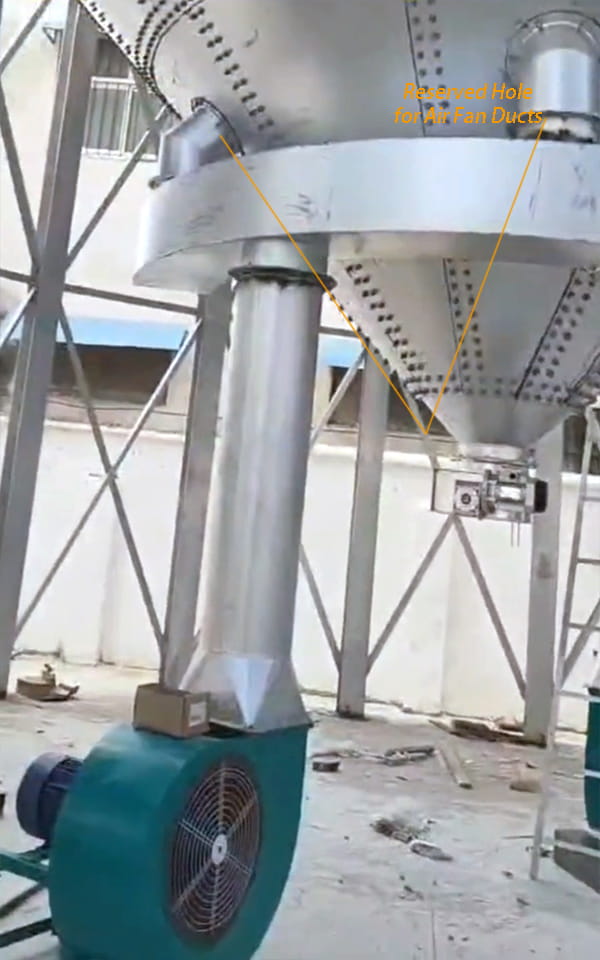
Grain Cooling
By grain cooling, the grain temperature is ≤15°C, which can greatly slow down the grain’s “breathing”.
Thus, achieving the purpose of long-term preservation, and preventing the reproduction of grain insects.
When the grain temperature in the silo exceeds the standard, the grain chiller generates cold air and sends it into the silo through the aeration system.
The cold air fully absorbs the heat of the grain during the movement from bottom to top.
Then the hot air escapes through the axial flow fan on the roof.
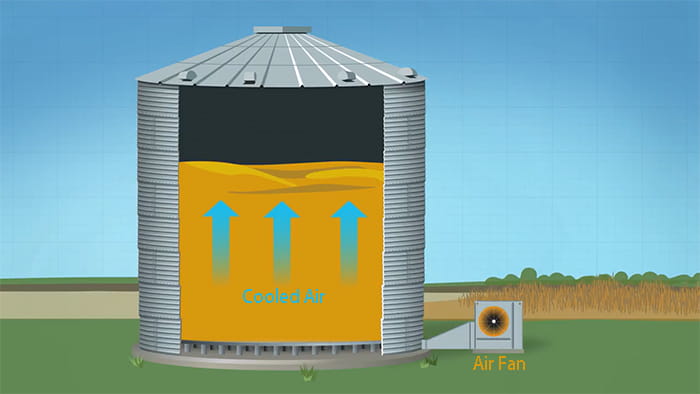
Grain cooling is an important grain storage & preservation technology, it not only reduces the grain temperature in the silo bin but also adjusts the grain moisture properly, which effectively maintains & improves the quality of stored grains.
Circulation Fumigation
Circulation fumigation technology introduces a microcomputer to control the deliquescent of aluminum phosphide tablets, producing phosphine gas.
Then the fumigation equipment forces the airflow to circulate, which promotes the even distribution of phosphine gas in the grain silo, achieving an effective insecticide.
Phosphine circulation fumigation is common in wheat storage silos in northern China, 9 hours after the fumigation, it reaches a uniform state, and the insecticidal effect is good.
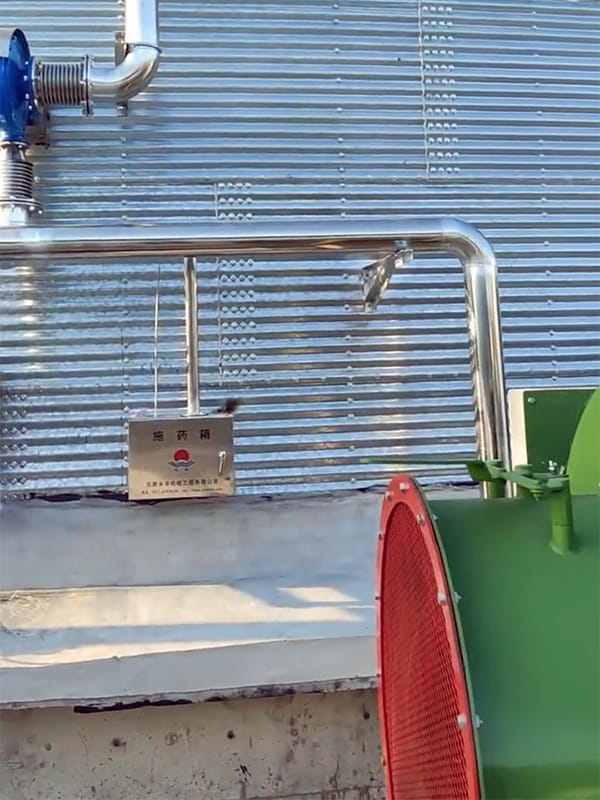
When the average grain temperature is above 25°C and there are no resistant insect species, the minimum concentration of phosphine in the steel silo should be above 70 ppm;
If the average grain temperature is below 25°C or there are resistant insect strains, the minimum concentration of phosphine in the grain silo should be above 100 ppm.
In addition, filling steel silos with nitrogen is also a good choice. The nitrogen enters the grain silo and flows evenly between the pores of the grains to discharge oxygen. So that the pests will die due to lack of oxygen.
 SiroSilo
SiroSilo